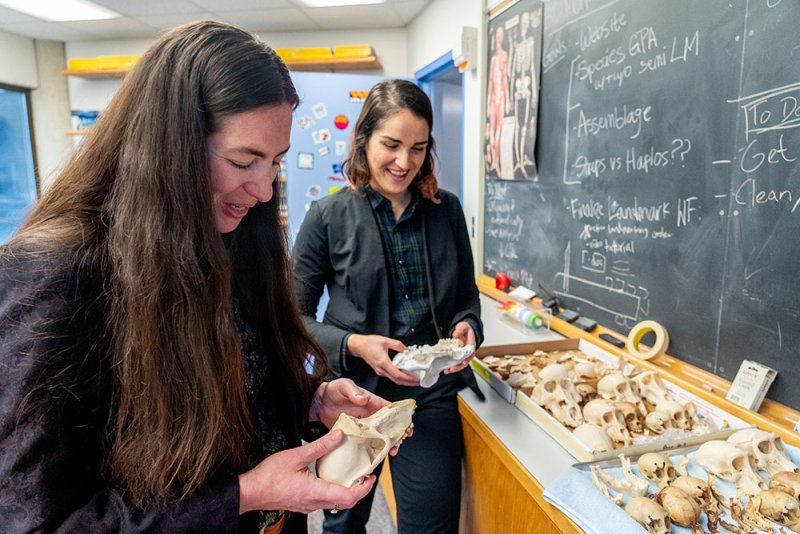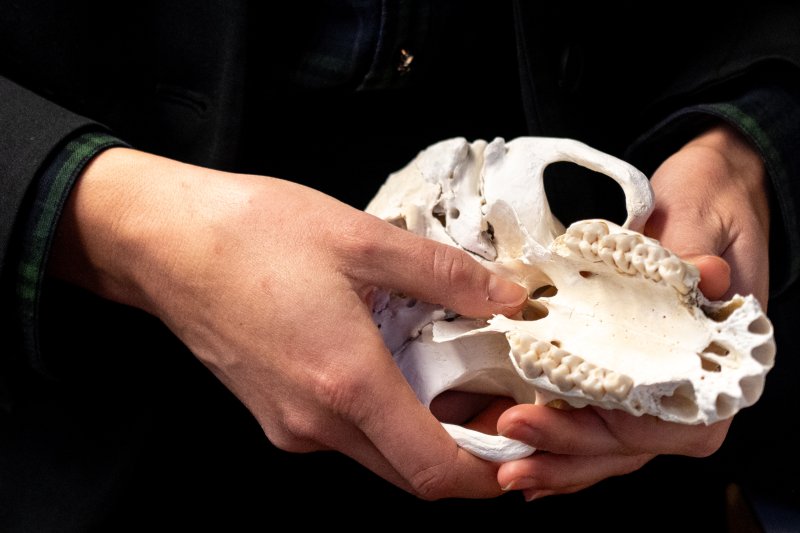WWU Anthropology Faculty Tesla Monson and Marianne Brasil Secure New $550k NSF grant
WWU Associate Professor of Anthropology Tesla Monson and Assistant Professor of Anthropology Marianne Brasil have secured a new $550,000 National Science Foundation grant to continue their research investigating how the human skull has evolved, from our ancestors 6 million years ago to present day.
“There has been a ton of research into brain size, and how humans and our human lineage have evolved as the brain has grown in size,” said Monson. “But there has been much less work done on things like the changes to our eye orbits, and how changes to the orbits and changes to the eyes have been linked to cranial development as a whole.”
About a million years ago, Monson said three factors began to jump-start the evolution of our ancestors: our body and brain sizes began to grow; we got more proficient at making and using tools; and we discovered cooking, which unlocked thousands of potential calories being gained each day when comparing cooked vs. uncooked foods.
“Nothing happens in isolation,” said Monson. “All evolutionary changes have impacts on our bodies, our brains, and even our behavior - that’s how natural selection works. And the changes to the skull at this time show how important this evolutionary path was – the skull, after all, houses our eyes, our ears, our nose, our mouth … all those senses.
“And as the skull was changing, so too were those senses along with the ability of our brain to interpret them; and as they evolved, so did our humanness. Did one sense, like vision, evolve earliest and limit the future directions of the others, or did they all come along at the same time? Those are the kinds of questions we are interested in,” she said.
The new grant will pay for the duo to hire one postdoctoral researcher, a master’s student, and up to six paid year-round undergraduate researchers. The vast majority of the work on the first stage of the project will be 3-D scanning about 1700 skull specimens from multiple museums and collections. The second stage will be the analysis, compilation, and publication of that data, and then in 2025, hosting a symposium at WWU focused on the Evolution of Vision.
It’s going to be an incredible research experience for our undergrads, and we’re excited to be able to offer it.
Marianne Brasil
An ancillary benefit to the new grant was funding from the NSF that sent Monson to collaborate with European research partners in Spain last summer. While there, she visited Atapuerca, one of the most famous excavation sites in Europe and the site where the first fossil Europeans were found (Homo antecessor). She also saw some of the oldest cave art in the world, talked shop with world famous paleoanthropologists, stepped inside the hominid vault, took a safari through the Paleolítico Vivo park where animals have been resurrected using gene technology to merge ancient and modern DNA (think Jurassic Park), and visited the cutting-edge labs and facilities of Burgos. The pair also spent their summer working on two manuscripts, one of which has been submitted for publication and another which is under review.
“It was an incredible, amazing trip,” said Monson. Over the holidays the globe-trotting researchers presented their research at the “Words, Bones, Genes, and Tools” workshop in Tübingen, Germany in December.
Brasil said they were hoping to have the postdoc and master’s student in place this coming summer, and move towards hiring the undergrads by next fall.
“It’s going to be an incredible research experience for our undergrads, and we’re excited to be able to offer it,” she said.
For more information on their research into the evolution of the human skull, contact Tesla Monson at tesla.monson@wwu.edu and Marianne Brasil at marianne.brasil@wwu.edu.

